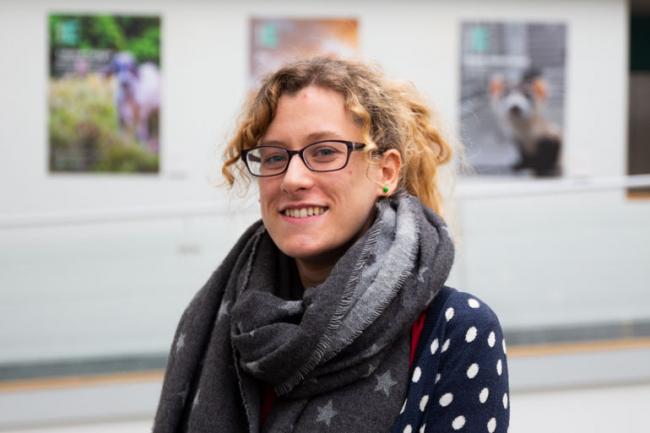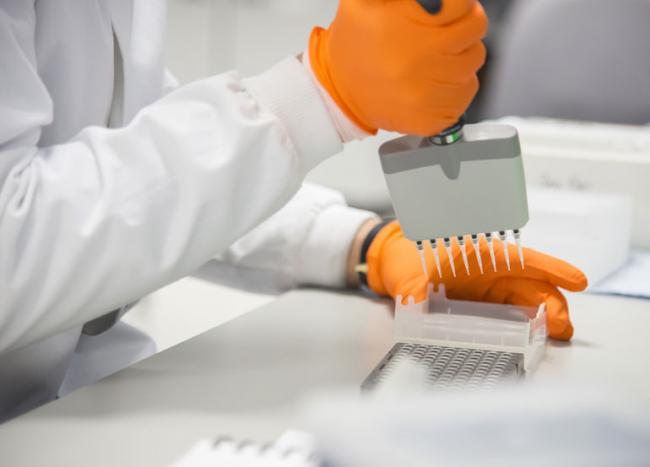
The human-microbiome interface is far too complex for any lab-based experiments to take on alone. Scientists in the Korcsmaros Group at Earlham Institute (EI) and the Quadram Institute (QI) have therefore developed MicrobioLink, a pipeline which allows users to explore how microbes affect humans based on computational analysis and predictions using a ‘network diffusion’ approach.
MicrobioLink allows users to model how microbes cause changes in gene and protein expression relevant to a particular disease or set of conditions, which can help target potential therapeutic avenues to explore through identifying key pathways triggered by microbe-host interactions.
Essentially - given a set of microbial proteins, human receptors, and known gene or protein changes relevant to a disease, the pipeline identifies pathways and novel connections based on publicly available protein-protein interaction data.
The versatile and customisable pipeline, freely available on GitHub and Dockerised for use across multiple operating systems and better reproducibility, can be adapted to study how SARS-CoV-2 proteins are affecting host transcriptomics.
How does the pipeline work?
MicrobioLink works via a five-step process.
The potential actors in any interaction are first compiled; microbe effector proteins, human receptors, signalling molecules and target genes of interest. Second, potential interactions between microbial proteins and host receptors are identified based on domain-domain or domain-motif approaches.
The TieDIE tool then infers signalling pathways that connect the host receptor to host target genes based on publicly available databases of protein-protein or protein-transcription factor interactions. An optional filtering step can be applied to focus on different conditions before the final model generated is visualised to show the journey from receptor binding to target gene.
A case study: Crohn’s disease
To test the pipeline, the Korcsmaros Group looked to identify potential pathways linking the microbiome to some of the gene expression changes associated with disruption of autophagy in Crohn’s disease (CD) through comparing data of CD patients and non-sufferers obtained from a twin study.
Having honed in on five autophagy genes that showed the greatest difference in gene expression between CD patients and non-sufferers, the team was able to identify a network model with pathways exclusive to both CD and the healthy state.
Two particularly interesting bacterial proteins were identified. One, expressed solely in non-sufferers and belonging to a family of proteins already implicated in Inflammatory Bowel Disease, could be an important stimulator of autophagy. Another bacterial protein found exclusively in CD patients was predicted to affect a signalling pathway specific to CD and key in the regulation of autophagy.
Dr Tamas Korcsmaros, Group Leader at EI and QI, said, “It is very challenging to understand how commensal or probiotic bacteria are influencing our health, and MicrobioLink now allows the scientific community to gain more insight.
“MicrobioLink as a first step will facilitate design focused experimental studies to leverage the existing wealth of meta-omics data from patients. We hope it will be used to develop new clinical intervention studies.”
Adapting the pipeline for SARS-CoV-2
One particularly interesting development, in light of the current coronavirus pandemic, is that the pipeline can be adapted to study the systemic effects that the SARS-CoV-2 virus appears to have on the human body.
Through identifying key interactions and previously unidentified connections between SARS-CoV-2 infection and the development of, for example, a cytokine storm in severe cases, the pipeline can be used to identify potential therapeutic angles to explore in the fight against COVID-19.
Dr Paddy Sudhakar, a Postdoctoral Researcher in the Korcsmaros Group, said, “the great thing about this pipeline is that it is agnostic of the source of microbial proteins. It can be applied to a wide range of conditions, including COVID-19, and their effect on diverse hosts.”
Access the cells paper here: "MicrobioLink: An Integrated Computational Pipeline to Infer Functional Effects of Microbiome–Host Interactions."





